stream banks
Showing 25–36 of 47 results
-
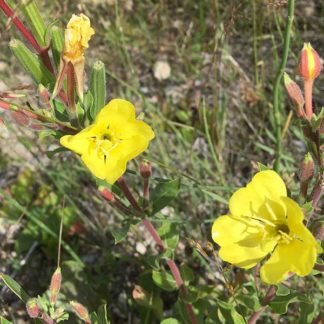
Oenothera villosa / hairy evening primrose
- yellow flowers on tall stalks, several flowers in a cluster
- 4 petals; 8 stamens; large, 4 part stigma
- hairy - often reddish - stems; hairy leaves
- lance-shaped leaves, larger on stem than basal
- disturbed areas and stream banks
-

Parnassia fimbriata / fringed grass of Parnassus
- ca. 1" flower with obviously fringed, white petals
- flowers look very "complicated"
- thick, rounded basal leaves
- usually in wet places, but also alpine on rocks
-
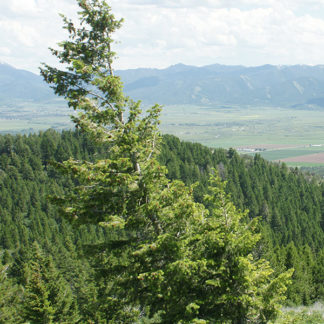
Picea engelmannii / Engelmann spruce
- common, especially in mixed conifer forests
- canopy a narrow spire in young trees, cylindrical in older trees
- sharp, pointy needles, generally "swept" toward branch tips
- needles attached to twigs with woody pegs (sterigmata)
- pendant cones less than 2.5 inches long; thin scales, wavy margins
-
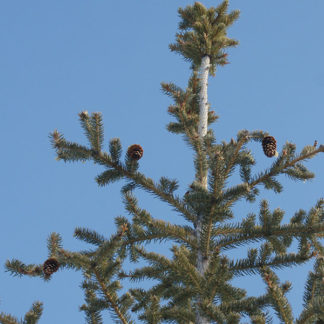
Picea pungens / Colorado blue spruce
- conical, layered crown; whorled branches
- frequent epicormic branches; "woolly" look
- stout, yellow-brown twigs with sterigmata (woody pegs)
- cones greater than 2.5" long
- cone scales stiff at base, diamond shaped, not wavy at tips
- in mixed conifer forests
-
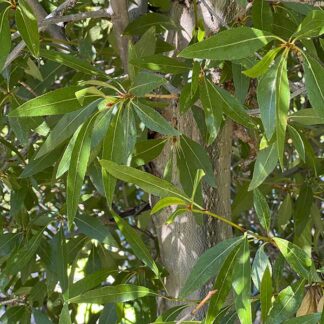
Populus angustifolia / narrow-leaf poplar
- a riparian tree also planted for landscaping
- long, narrow leaves with serrated edges
- furrowed, grey bark on mature trees; smooth and yellow-ish on young trees
- flowers are small, grey catkins in very early spring
- fruits are fluffy white cotton in early-mid summer
-

Potentilla fruticosa / shrubby cinquefoil
- low, deciduous, shrub; wetlands and riparian zones
- yellow buttercup-like flowers with 5 leaflets, often in clusters
- blooms from June until frost
- pinnately compound leaves, typically with 5 leaflets
- fruit (achene) remains into winter
-

Primula parryi / Parry’s primrose
- striking, bright magenta (or pink) flowers with yellow centers, 5 petals
- 3 to 30 flowers per stalk
- brilliant green foliage as a rosette
- foliage releases horrible smell with the slightest touch
- typically at higher altitudes in wet places
-
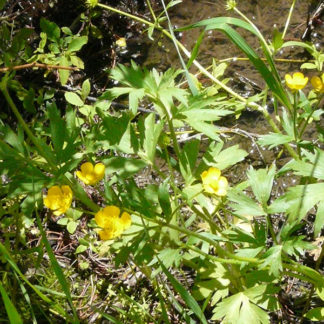
Ranunculus orthorhynchus / straightbeak buttercup
- 5 (to 8) bright, shiny yellow petals with long pedicels
- many stamens and pistils
- large, compound leaves with 3-5 pointy-lobed leaflets
- found in wet areas including irrigation ditches
-
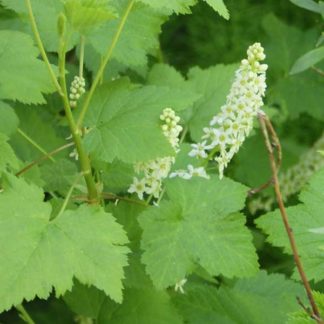
Ribes hudsonianum / northern black currant
- moist wooded areas, streambanks
- erect, spike-like inflorescences with up to 50 white flowers
- bitter berries, ripening to black
- leaves and stems covered with resinous glands
- leaves 3-5 lobed, glandular below
- smells bad
-

Ribes viscosissimum / sticky currant
- shrub to 7 feet tall
- stem and leaves covered with sticky, glandular hairs
- white, bell-like flowers in drooping or erect clusters (up to 15)
- rough leaves, 3-5 equal lobes, toothed margins
- fragrant flowers and leaves
-

Rudbeckia occidentals / western coneflower
- dark cone-shaped flower head - like a sunflower without petals
- ring of yellow "bumps" visible during pollination time
- "cones" about 1" but double that when in seed.
- usually a tall plant with sunflower-like leaves
- alternate (not opposite) leaves
-

Scutellaria galericulata / marsh skullcap
- riparian zones and wetlands
- blue, trumpet shaped (legume) flowers; usually in pairs on same side of a stem
- flowers not at the top of the stems
- square stems, widely spaced opposite leaves; adjacent pairs at right angles
Showing 25–36 of 47 results